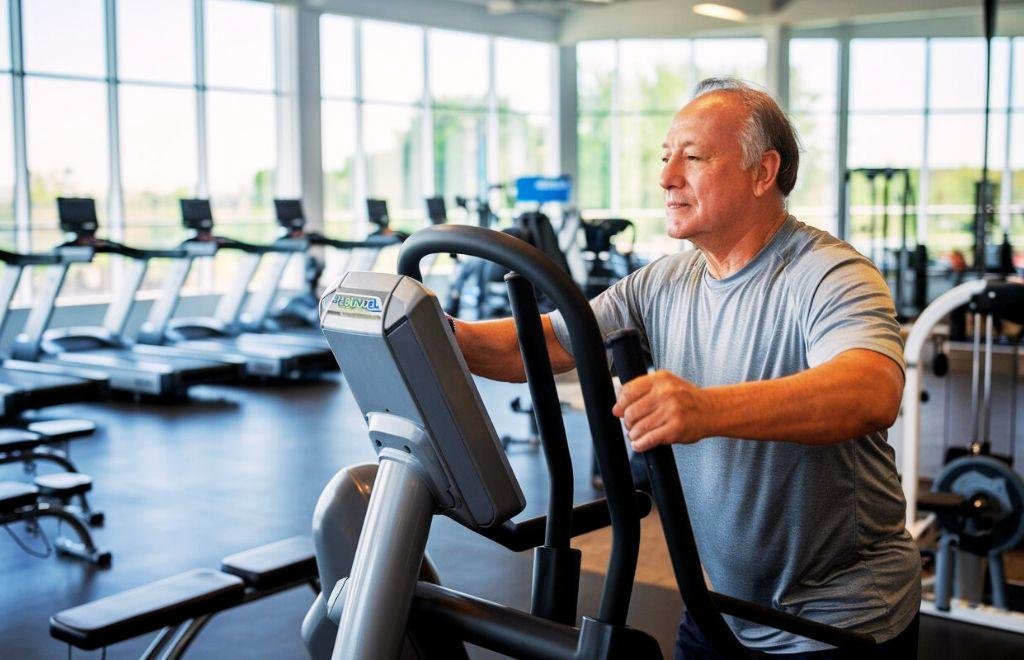Benefits of the dead bug exercise. Methodical Advice Common Mistakes in the Dead Bug Exercise Variations and modifications in dead bugs Safety and Care Notes Attempt the dead bug exercise.
One approach for strengthening your back and core is the dead bug exercise. You work on this workout lying on your back. There are various variances that either simplify or complicate things.
Targets: Transverse abdominis and spinal erectors, among core muscles
Level: Natatorial
How should one perform a dead bug?
Practice this on a padded mat. Placed under your shoulders, a folded towel or flat cushion will help your neck dead bug exercise.

Maintaining your hips and low back stability, stay stationary during the workout. Move steadily and under control. Press your lower back into the floor and work your core muscles.
The following image demonstrates how:
Lying on your back with your knees bent and your feet flat on the floor, roughly one foot apart from your hips, set up the position. Rest your arms alongside yours.
dead bug exercise ball for stability.
Using a stability ball helps boost spinal and core stability. Throughout the exercise keep your lower back steady and grounded to the floor. Your arms and legs should be the sole motions used here.
To achieve this:
Straight back. Between your hands and knees hold a stability ball.
Keep the ball away from your forearms, thighs, and chest.
Extending your left arm and right leg down to the floor, press your lower back onto the floor.
Holding the ball in position, press up and in with your left knee then down and away with your right hand.
Spend a few seconds in this posture; then, go back to the beginning.
Repeat on the other side.
To complete it:
Let your lower back and shoulders drop heavy to the ground.
dead bug exercise Your shoulders should be down away from your ears. Raise your hands such that your fists face in toward each other and your elbows are above your shoulders in the starting posture.
Lift your legs to have your knees exactly over your hips.
Breathe out, then gently drop your left leg and right arm till they just barely above the floor.
Come back to the beginning point on an inhalation.
Continuum on the other side.
To simplify it
lie on your back with both feet on the floor. Slides one foot away from you slowly; then, bring it back and alternate legs.
Start with your feet on the floor and your hands laid on the floor over your head. Then, as you would usually do, raise your arm and the opposing leg.
One arm then one leg at a time. Try then simultaneously working both arms and both legs.
Not moving your arms and legs down the whole range of motion reduces it.
To complicate things more
Work with dumbbells, kettlebells, or ankle weights.
At the same moment lower both arms and legs.
Kegel exercises help to strengthen your pelvic floor throughout the workout.
When you consider core or abdominal exercises, most likely you think of sit-ups, crunches, reverse crunches, or even Russian twists—exercises involving flexion or rotation of the abdomen as you move throughout a range of motion.
The common claim is that these workouts “carve” the core and provide the six-pack look you’re hoping for. While definitely they can help with developing the rectus abdominis and obliques—more of the
“show me” muscles of the stomach—it’s every bit as vital (if not more so) to train the deep muscles of your core, including the spinal erectors and transverse abdominis.1 Add stabilizing exercises like the dead bug to your regular strength-training program to develop these muscles.
The trouble is, “dead bug” sounds like an odd or nasty movement. That’s not at all. Laying on your back, you do the dead bug exercise. Keeping your body still and core firm, you extend and retract opposing
extremities to avoid your hips or shoulders from rolling back and forth or your lower back from arching off the floor. Starting the dead bug requires simply a yoga mat; it is beginner-friendly. Just include it into your usual core-training program or following a cardio session.
The advantages of dead bugs
When you consider abdominal work, most likely you think about working your abs to look nice in a swimsuit. But your abs are a major component of your whole core musculature, which really comprises all the muscle groups running between your hips and your shoulders.

These muscles maintain your spine and cooperate to move your upper and lower bodies. Strong, steady core thus aids in both preserving your lower back from damage and promoting coordinated, athletic movement.
Perfect for entire core stability and increasing contra-lateral limb activation, the dead bug exercise is also.
Mullane M; Turner A; Bishop C. Dead bug technique: method of exercise. Journal of Strength and Conditioning.
This implies that the exercise assists you to keep your core steady and protect your back while learning to move opposing limbs in synchrony.
Consider games like basketball or tennis—how athletes must stretch, reach for the ball, or jump using opposing limbs? Strong, steady core helps to enable these kinds of motions.4. But not just sportsmen
require this kind of back-protecting core stabilization. Anyone who has ever stumbled over an uneven pavement or fallen off-balance after running into a misplaced chair understands that it takes little to lose control of your core.
Keeping your core steady and safe, the dead bug is a beginners’ friendly technique that helps you become used to contra-lateral limb extension. Correctly performed, the dead bug helps your low back,
abdominals, hips, and deep, stabilizing muscles to engage, therefore preventing back twisting or arching during the exercise. While increasing deep core strength that helps lower the chance of low-back injury, you will also be enhancing side-to–side coordination that can be quite beneficial for athletic performance.
Those who aren’t quite ready for the more well-known plank exercise also find the dead bug to be a great alternative. Although both activities are meant to help with core stabilization,
the plank can be difficult for people with low back discomfort or those lacking considerable core strength. While adding the difficulty of contra-lateral limb movement to the mix, the dead bug can aid strengthen the core stabilization required for the plank.
Dead Bug Exercise Methodical Directions
Since the dead bug exercise is done on the ground, you essentially need about the same area as a yoga mat.

Lie on the mat forming a perpendicular angle with your torso by extending your arms straight up. Lifting your feet off the ground, bend your hips and knees ninety degrees. Your thighs and shins should make a perfect angle as should your torso and thighs. This is the beginning point.
Keeping contact between your lower back and the mat, engage your core. Over the course of the workout, you want your spine to remain in this consistent, neutral posture.
While you simultaneously extend your right knee and hip, reaching your right heel toward the floor, keep your right arm and left leg exactly where they are and then gently reach your left arm backward, over
your head, and toward the floor. Breathe deeply while you execute the extensions, moving gently and steadily; avoid twisting or using your hips and abs. Just before your arm and leg strike the floor, stop the action.
Revers the movement and bring your left arm and right leg back to their original points. Exhale as you go and move gently and firmly.
Keeping your left arm and right leg stable, stretch your right arm and left leg using the identical motions to the other side.
Count the repetitions on both sides the same number. Finish a full set, then sit up and straight back your feet to the ground.
We looked at, tested, and evaluated the top yoga mats. If you are shopping for a yoga mat, investigate which one would be most suitable for you.
Common Mistakes in Dead Bug Management
Moving Too Quick

Hands down, the most common error with the dead bug exercise is when people try to use momentum and speed to propel themselves through and confuse it with a bicycle crunch.
One of the main signs of this error is if all of your extremities move simultaneously—as if you haven’t stopped completely at the peak of the movement before beginning the one to the other side.
Focus on stability; slow way, way down. Try slowing down more if you find you’re moving too quickly. Your torso starts twisting and you stop keeping the ideal stabilization of your core as soon as you start accelerating.
Grab a foam roller or stability ball and hold the item between your hands and knees when you set up to start the workout if you simply can’t seem to stop yourself from racing through each repeat. The aim is to prevent the instrument from falling—
something you cannot accomplish if you release it with more than two extremities at once. Holding it in position with one hand and one leg as your opposite extremities lengthen forces you to slow down and “reset” between each repeat before moving to the other side.
Low Back Arching Away From the Floor
Your back may naturally arch up and away from the floor anytime you’re doing supine abdominal workouts mostly because of weak core stabilizers—your transverse abdominis and spinal erectors in particular. Your muscles just aren’t strong enough to hold your low back in alignment.1:

Should you find your back arching, start by slowing down to fix the error. Should that prove ineffective, hold a stability ball or foam roller stable with two extremities as the other extremities move through their extensions.
Reducing the range of motion of your extensions can help you to keep your lower back from arching off the floor during the dead bug exercise. Just stretch your opposing arm and leg as far as you can without back arching starting. Bring your arm and leg back to the center when your lower back arching starts, then repeat on the other side.
Variations and modifications in dead bugs
Request a change.

Though anyone with weak core stabilizers may find themselves battling with correct form, the dead bug exercise itself is a really beginners-friendly routine. Moving one extremity at a time, instead of opposing arms and legs, can help you to keep your torso steady as you perform the dead bug.
Try extending your right arm by itself rather than both left leg and right arm at once. Return it to the center then stretch your left leg. Bring your left leg back to the middle then work with your left arm and right leg.
Try the opposite arm-opposite leg challenge once you feel you can independently move each extremity; modify the range of motion depending on how your torso shifts or your lower back arch off the floor stops your extensions.
About a Challenge.
For those new to training or those with low back discomfort especially, the dead bug exercise is a wonderful precursor to a simple plank or any number of plank modifications since it works the same
stabilizing muscles as the plank without putting as much possible strain to the lower back.5 five This is so because the dead bug is done lying on your back, which facilitates the identification and management of a lower back arch than the plank exercise.
Once you have perfected the dead bug exercise, go ahead and include a standard forearm plank into your workout; if you feel comfortable with the basic plank, try plank extensions where you lift and extend one or two extremities at a time (opposing extremities if you are lifting two), maintaining perfect core stabilization through your torso.
Balancing on the balls of your feet and your forearms, you can complete the plank by tightening your core and creating a straight line with your torso from your heels to your head.
Make sure you avoid letting your butt lift toward the ceiling or allow your hips slink toward the floor.
Alternatively, if you would want to follow supine workouts, give the basic dead bug more weight. As you extend your contra-lateral limbs,
hold a lightweight dumbbell in each hand or hook a resistance band between your opposing hand and foot to provide opposition. Use a resistance band; execute all repetitions to one side then change sides.
Safety and Avoidance Strategies
Generally speaking, most people find the dead bug exercise safe. Like any strengthening action, the main danger of damage results from sacrificing appropriate form in an attempt to “gut out” a set of repetitions. Simply said, your ego is speaking.

Your muscles are exhausted, hence if your form starts to degrade, it is probably time to wind up your set. Doing more repetitions with poor form won’t aid your efforts to get stronger, and may cause injury—especially of the lower back.
As you slow down, focus on form; make sure your body isn’t swinging back and forth and your lower back isn’t arching. Second, should you have a known lower-back problem, avoid pushing yourself to execute the action if it aggravates your condition. One thing is muscle soreness or tiredness; but, you want to prevent severe, jabbing sensations, any kind of agony that causes you to consider, “I won’t be able to move tomorrow.”
See a physical therapist or personal trainer for alternatives should the dead bug workout not be working for you.
Dead Bug Exercise FAQ:
Dead bugs should be done how often?
Dead bugs should be included into your two to three times weekly exercise schedule. Start with 10–12 repetitions on each side and progressively raise the count as you grow more strong.
Does a beginners variation exist?
Indeed, if you find the whole Dead Bug difficult, begin the action by maintaining a little bent knees and arms. This will simplify the exercise and limit of motion will be lowered.
Can I perform dead bugs when pregnant?
Before beginning any new fitness program—especially if you are pregnant—you should see your healthcare physician. For your particular circumstances, they can offer direction on suitable and safe activities.
Can Dead Bugs address back discomfort?
Dead Bugs might help support your back by strengthening your core muscles, but it’s not a sure fix for back discomfort. See a doctor for appropriate diagnosis and treatment if you have ongoing back discomfort.











